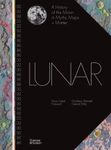![Introduction to Astronomical Spectroscopy Introduction to Astronomical Spectroscopy]()
Click to have a closer look
About this book
Contents
Customer reviews
Biography
Related titles
About this book
Spectroscopy is the principal tool used in astronomy to investigate the Universe beyond Earth's atmosphere. Through the analysis of electromagnetic radiation, spectrographs enable observers to assess the chemical composition, kinematics, and local physical properties of distant stars, nebulae, and galaxies. Thoroughly illustrated and clearly written, Introduction to Astronomical Spectroscopy offers a practical and comprehensive guide to the different spectroscopic methods used in all branches of astronomy, at all wavelengths from radio to gamma-ray, and from ground and space-borne instruments. After a historical overview of the field, the central chapters navigate the various types of hardware used in spectroscopy. In-depth descriptions of modern techniques and their benefits and drawbacks help you choose the most promising observation strategy. The handbook finishes by assessing new technologies and future prospects for deep-sky observation. This text is an ideal reference for today's graduate students and active researchers, as well as those designing or operating spectroscopic instruments.
Contents
Preface
1. Historical remarks
2. Spectroscopy in present-day astronomy
3. Basic physics of spectral measurements
4. Optical-range grating and prism spectrometers
5. Other techniques for the optical spectral range
6. Preparing and reducing optical observations
7. UV, X-ray, and gamma spectroscopy
8. Spectroscopy at radio wavelengths
9. Special techniques for the far IR and sub-mm range
10. New developments and future prospects
Appendix
List of references
Index
Customer Reviews
Biography
Immo Appenzeller is Emeritus Professor of Astronomy at the University of Heidelberg, Germany, and Director of the Heidelberg State Observatory.
By: Immo Appenzeller(Author)
254 pages, 110 b/w photos and b/w illustrations
"Immo Appenzeller's text is a complete and comprehensive introduction to the subject. The book covers all relevant aspects of astronomical spectroscopy from the basic physical principles of spectroscopic measurements and their technical implementation in real astronomical instruments to the principles of observations and data reduction. While being guided through the spectroscopic techniques across the electromagnetic spectrum from gamma rays to radio wavelengths, the reader is provided with an insider's overview of today's and future leading astronomical spectroscopic facilities on the ground and in space. The text is a valuable source of information for today's multi-wavelength astronomer who is using a wide range of spectroscopic instruments and is trying to get the best out of the allocated observing time."
– Andreas Kaufer, Director, La Silla Paranal Observatory, European Southern Observatory
"This volume is highly recommended for scientists requiring an overview of techniques perhaps outside their main area of research but needing complementary wavelength coverage. It would also be excellent to accompany any course in astronomical techniques."
– The Observatory



































